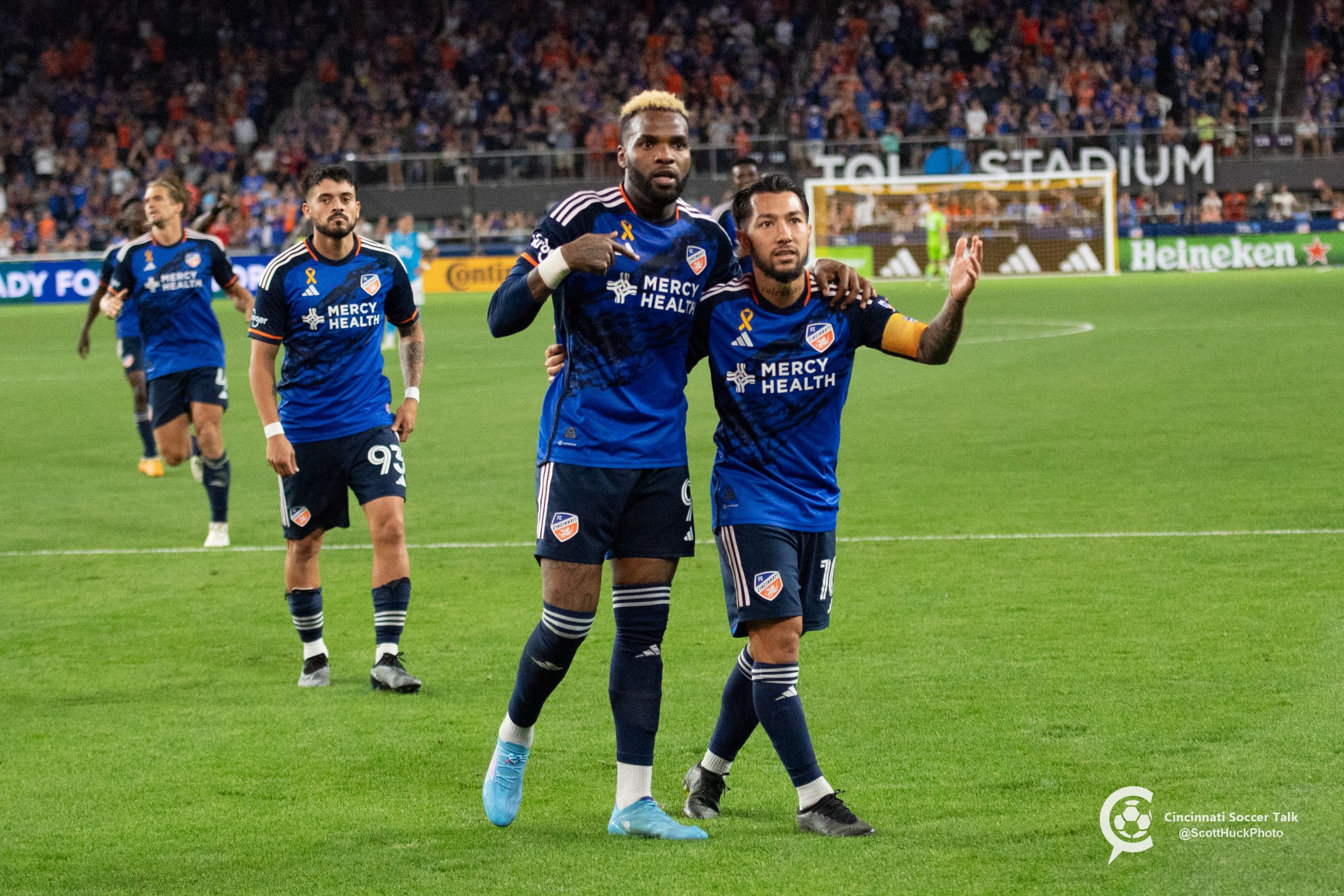Let’s get something out of the way up top: FC Cincinnati can clinch the Supporters’ Shield with a win on Saturday in Toronto. That felt strange to type. Maybe it still feels weird to read too. General Manager Chris Albright seems intent on keeping FCC’s championship window open for years by committing to players already on the roster to lead the Orange and Blue for years to come. FCC will have to deal with major departures, most likely this offseason, but a reliable core of players at important positions sets the team up for long-term success.
Acosta’s MVP Case: A Primer
Lucho Acosta signed his much-awaited extension last week and celebrated with a ho-hum (for him) goal and assist against Charlotte FC. The goal, a mesmerizing run from his own half (reminiscent of another goal by an Argentine 10), put the game fully out of reach and provided a statement highlight for Acosta’s Most Valuable Player candidacy.
TE QUIERO MUCHO LUCHO pic.twitter.com/M2pXXFvtRp
— x – FC Cincinnati (@fccincinnati) September 27, 2023
Other than being the best player on the best team in the league, Acosta’s case for MVP is a strong one. As of this writing, Acosta is tied for the lead in the Golden Boot race with 15 goals and his 12 assists are fourth in the league. He leads MLS in goal-creating actions with 1.05 per 90 minutes and is among the league leaders in shot-creating actions with 6.87 per 90 minutes.
Acosta is truly the engine that makes FCC’s attack run. His 7.27 progressive passes per 90 minutes and 3.79 progressive carries per 90 minutes both lead the Orange and Blue by wide margins. Basically, if the ball is moving toward FCC’s opponent’s goal, there’s a good chance Acosta is playing a key role.
That’s not all. Acosta also leads the team in progressive pass receptions, just barely ahead of Álvaro Barreal on a per-90 basis (a fact for another day). Thinking about it another way, Acosta is either making or receiving more than 40 percent of FCC’s completed progressive passes every match. He completes more than 35 percent of FCC’s passes into the penalty area.
His centrality to FCC’s on-field success cannot be overstated. It might be too soon to build the statue but FCC should keep whoever the August von Kreling of 2023 is on call.
Boupendza’s Solid Start
When Aaron Boupendza signed with the Orange and Blue, I wrote that his best attribute was an ability to consistently get into dangerous spots. That’s carried over to his first minutes in Cincinnati. According to Football Reference, in 390 MLS minutes, Boupendza has scored four goals, and tellingly, produced 3.9 expected goals, indicating the ability to generate shots from advantageous positions. That shows up in his shot chart in league games:

Data Courtesy of Wyscout
Boupendza has taken a few attempts from distance (which is very much in the scouting report) but mostly found spots exactly where you want a striker to find the ball: right in front of goal.
Needless to say, a goal every 98 minutes isn’t sustainable. Same with Boupendza’s 1.06 xG+xAG per 90 minutes. But even as Boupendza works out some kinks with the rest of FCC’s attacking trio, the early returns are promising. As his chemistry with Acosta and Brandon Vazquez continues to build, FCC’s attack should be in good shape as the Orange and Blue look to clinch the Supporters’ Shield and make a run towards MLS Cup.
Though we’re still looking at a small sample size, Albright’s decision to bring in a proven Designated Player, even though it meant sacrificing U22 slots, seems to have been the right one. Coupled with Acosta’s finalized extension and FCC’s window to compete for silverware isn’t likely to close anytime soon.
Celentano’s Extension
Roman Celentano signed a long-term extension a few weeks ago, keeping him under contract through the 2027 MLS season.
The stability Celentano has provided as a shot-stopper in goal is an under-discussed factor in FCC’s turnaround over the course of the last two years. Before last season, FCC’s goalkeepers’ dire shot-stopping exacerbated the problems caused by an already bad defense creating a perfect storm to concede goals. Though Celentano isn’t an elite shot-stopper according to the stats, he’s firmly in the middle of the pack of MLS goalkeepers, allowing 31 goals on 30.3 post-shot expected goals. For context, as a rookie, Celentano allowed 42 goals on 41 PSxG. So there should still be upside in Celentano’s shot-stopping. After all, he’s still just 23-years-old and has just over 5,000 minutes into his professional soccer career.
FCC has conceded just two goals from corner kicks with Celentano in goal this season compared to six last year, suggesting Celentano has improved his penalty area management and decision-making during those set pieces.
From a team-building perspective, Celentano’s extension has pluses and minuses. Per Laurel Pfahler, his Generation Adidas contract was due to expire at the end of the season. A benefit of a GA contract is that a player’s salary does not count against the salary cap. Celentano’s guaranteed compensation is $112,500 in 2023, and assuming he’s getting a raise, Albright will have a tighter cap to manage in 2024.
However, Albright’s decision to lock in an already proven, domestic goalkeeper with room to improve to a long-term deal is a good one. Celentano is already on the radar of the U.S. Men’s National Team, and given continued, incremental improvement, call-ups could be more regular in the future and potential moves overseas could be in the future. A long-term deal gives FCC more leverage if European clubs start circling.












